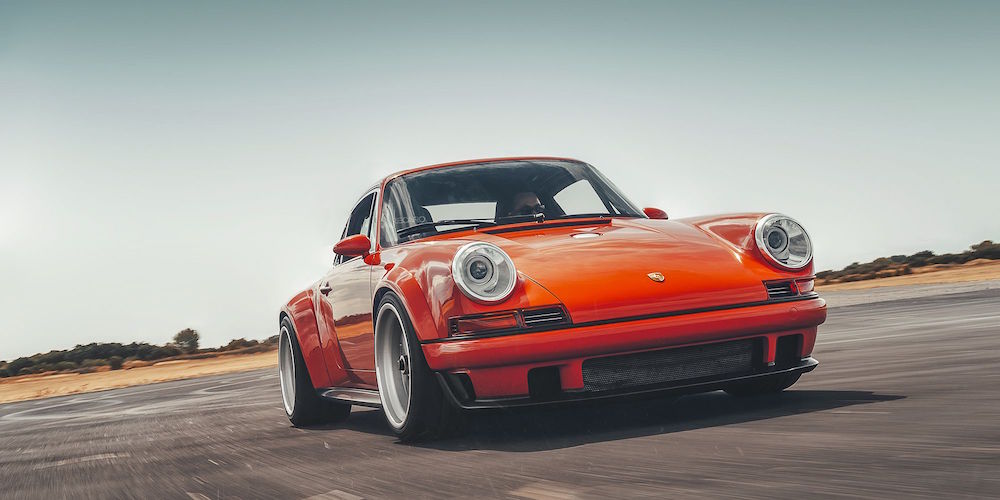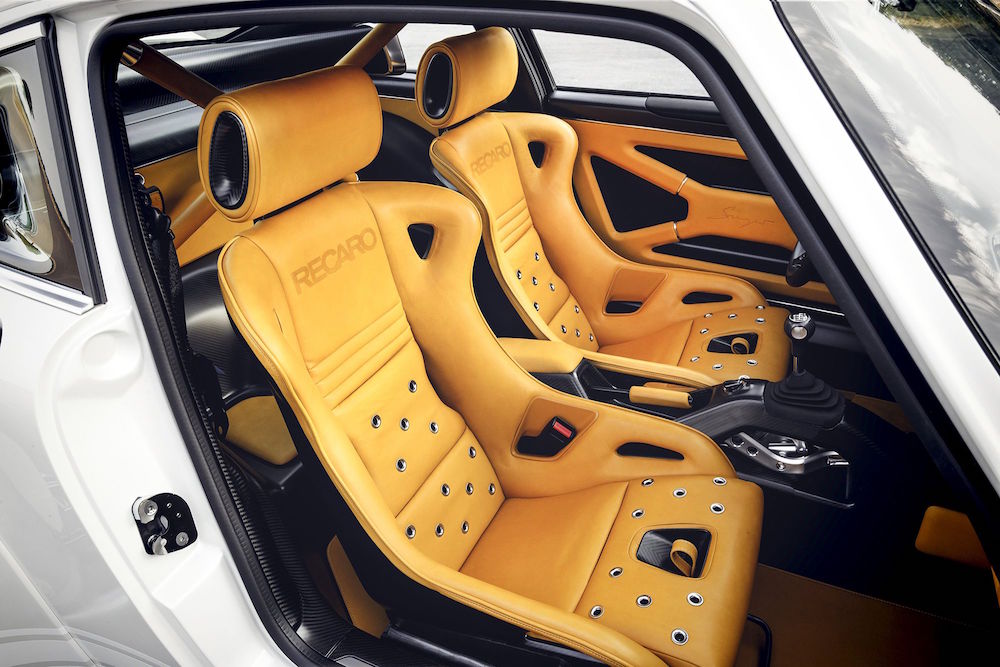Singer-Williams DLS: A Look Behind the Legend
Automotive perfection, from test mule to crown jewel.
For years, Singer Vehicle Design’s reimagined Porsche 911s have represented the pinnacle of everything a 911 can be. For one, there’s the 911, arguably the greatest sports car the world has ever seen. Then there’s Singer, which takes 1989 to 1994 964 911s and turns them into something like a rolling Porsche greatest hits compilation. There’s the achingly gorgeous long-nose look of the early 911s and the simple Teutonic interior. Only now, the body is mostly carbon fiber and the interior is finished to Bugatti-like standards. Everything in between has either been restored or replaced with something better than what it left the factory with.
Now add Williams Advanced Engineering to the mix and you’ve got gearhead nirvana. Singer has partnered with the iconic Formula 1 constructor to build the Design and Lightweight Study, or DLS. And after building 100 stunning cars, this one is the jewel in Singer’s crown. Writing for Road & Track, journalist Preston Lerner was embedded with the Singer team as the DLS came to fruition. From flogging test mules at old RAF airfields in England to cramped engineer meetings in Los Angeles, Lerner witnesses the car go from a dream to a reality.
The DLS was unveiled at this year’s Goodwood Festival of Speed. Limited to just 75 cars, the DLS will begin delivery in 2019 and set buyers back a cool $1.8 million. But for that small fortune, you’ll own one of the most beautiful – and formidable – objects man has ever put on four wheels.
No compromises for perfection
Thanks to Williams’ input, the DLS is incredibly powerful; think 500 naturally aspirated horsepower at 9,000 rpm. Redline comes at 11,000 rpm, making Singer’s trademark tachometer an honest one. Of course, none of it has been easy. Or cheap. From Road & Track:
The DLS, by way of contrast, has become more expensive and exotic during the design, engineering, and manufacturing phases. So it now sports not just a four-valve engine, but also an all-new gearbox from Hewland. Not just lighter suspension components, but also reimagined multilink geometry. Not just a specially calibrated motorsports anti-lock brake system from Bosch, but also Bosch-engineered traction control and electronic stability control.
The article opens with a DLS mule looking like a Craigslist basketcase testing its limits at an Airfield. Along the way, we meet Mazen Fawaz, Singer’s managing director for the DLS, and the founder himself, Rob Dickenson. Dickenson’s take-no-prisoners approach to design and execution often leads to conflict with the engineering team. But in the end, it leads to brutally fast works of art like this car.
After shaking down the test mule, Fawaz outlines the DLS’ objective. “What’s really important to us is that it be engaging at any speed, even parking,” he says. “It’s got to blow your mind, even at idle.”
Once the finished product enters the picture, it’s clear that he and his team have succeeded. Lerner gets a few minutes behind the wheel and describes it like this:
With open pipes, the car is ridiculously loud, but I forgo ear protection to savor the auditory overload. I blip the throttle. There seems to be no resistance; the engine revs as freely as a race car’s. I select first gear and shudder off. The low-pitched growl, a bit bassy at low rpm, gives way to a sharper, cleaner wail. There’s no sense that the engine is reaching the peak of the power curve, but I’m reluctant to take my eyes off the road to search for the tiny digital tachometer. So I wait for Clark, sitting in the right seat, to prompt me to shift. Then I mat the throttle, and the car leaps forward. Into fourth gear and flat again. The engine seems to be loving it as much as I am. If the fuel cut-out weren’t installed, I’d be tempted to spin it until a piston sailed out the side of the block.
As I turn around for my last blast down the runway, I boot the throttle and gently kick out the tail. If Clark weren’t by my side, and if there weren’t a bunch of guys on the taxiway ready to pulverize me if I damage the car, I would happily turn donuts. Instead, I effortlessly catch the rear end with the quick, hydraulic steering and keep the throttle pinned until Clark signals that I’m done for the day. My ears are ringing when I climb out.
Of course, there’s much much more to this feature. Be sure to read the full story on Road & Track. It’s a hell of a story.



